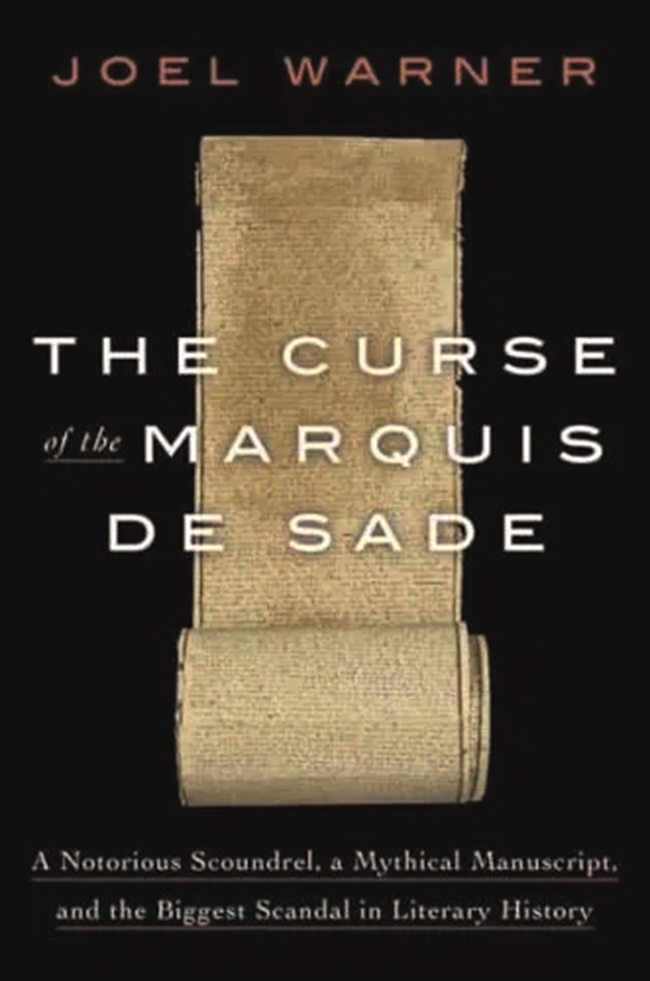The Story Behind the Marquis de Sade’s Cursed Manuscript

It is one of the most reviled and controversial manuscripts ever penned and has had long and complicated history. As a new book on the subject is published, we ask is Les 120 Journées de Sodome really cursed?
The handwriting was so tiny, you needed a magnifying glass to read it. For 37 days, the Marquis de Sade toiled to put his depraved words to paper, writing only in the evenings by candlelight in his Bastille prison cell so as not to risk being caught by his jailers. When he reached the end of one piece of paper, he would paste another piece below it, continually lengthening the manuscript. By the time he had completed the first draft of his shocking novel in the autumn of 1785, it ran to 157,000 words, the scroll of paper measuring just over 12m. At the top, it bore its now infamous title, Les 120 journées de Sodome, ou l’École du libertinage. His story of four wealthy libertines indulging the vilest of sexual fantasies would become one of the most controversial novels ever written.
Four years later, in July 1789, the Bastille found itself at the epicentre of the French Revolution when insurgents stormed the Parisian prison. Days before, Sade had been transferred to an asylum for the insane, but his precious manuscript remained hidden in his cell and he never retrieved it. “Every day I shed tears of blood,” he wrote of the loss. Twenty-five years later he died, thinking it lost for ever.
A long journey
But the rolled-up scroll remained hidden from the prison looters, and was eventually found wedged between the stones of one of the cell walls. Somehow it came into possession of a chap called Arnoux de Saint-Maximin, probably one of the labourers hired to pull the Bastille to the ground. Over the following two centuries, the manuscript took on a life of its own, moving between France, Germany and Switzerland, as it bounced unceremoniously from one owner to the next. Bizarrely, almost everyone who possessed it lost their life savings or saw it snatched away from them, leading to the suggestion that this obscene novel was, in fact, cursed.
Now, the amazing story of this scroll of paper has been told in an intriguing new book called The Curse of the Marquis de Sade by Joel Warner. In it, the American writer describes how so many of the manuscript’s owners have suffered “mayhem and misery” of one sort or another. “Depleted fortunes, ruined relationships, social turmoil, theft and legal disputes, loneliness and pain, disease and death…”

© JOEL WARNER
Is it cursed?
Warner says he doesn’t believe in the manuscript’s curse himself. He travelled five times to France to research his book and in 2017 viewed Sade’s original work at the Hôtel Drouot auction house in Paris, hours before the government declared it a national treasure and forcibly possessed it for the nation. “After spending so much time researching this artefact, I found it quite amazing to stand inches from the manuscript,” he told France Today. “Witnessing the tiny, carefully crafted handwriting, I said to myself, ‘this does not look like the work of a madman’.”
Today, the scroll is held in Paris, courtesy of the French government, at the Musée de la Bibliothèque Nationale de France, on Rue Vivienne in the 2nd arrondissement, where the public can visit it. But its journey to get there was a long and convoluted one. Arnoux de Saint-Maximin sold it to an aristocratic book collector called Charles-André de Beaumont, who bequeathed it to his son-in-law, who in turn passed it on to his son, the Marquis de Villeneuve-Trans. The latter had a wooden capsule with a phallic screw-on lid made to house the pornographic work. Its next known owner was a German sex researcher called Iwan Bloch, who, in 1904, published the very first printed edition of the story – just 200 copies but did so anonymously and in its original French, in order to protect his reputation.
On Bloch’s death aged 50, narrowly avoiding the book burnings perpetrated by the Nazis in the late 1920s, the 120 Journées manuscript passed on to Bloch’s publisher Max Harrwitz, who sold it to a well-connected French aristocrat, the Vicomtesse Marie-Laure de Noailles… who happened to be Sade’s great-great-great-granddaughter. It was around this time that the French Surrealists began to take an interest in the manuscript. “Surrealists generated explicit artworks inspired by his life and penned esoteric essays on his theories, mounted excursions to his Provençal childhood home and planned a masked orgy in an abandoned mansion,” Warner writes in his new book. “And like the marquis, the predominantly male group treated female bodies as objects they could freely prod and probe, dissecting and reassembling them in sculptures, photography and paintings.”
After the viscountess died of a stroke in 1970, the manuscript passed to her daughter, Nathalie, after which it was stolen, smuggled to Switzerland and sold to a wealthy collector of erotica called Gérard Nordmann. Nordmann died relatively young, in his early 60s, further fuelling rumours of a curse. Sade’s work then ended up at the Bibliotheca Bodmeriana, a library just outside Geneva.
By now, it was one of the most infamous handwritten texts ever created and collectors all over the world were desperate to possess it. But only one was willing to pay the Nordmann family enough money to take it off their hands. His name was Gérard Lhéritier. A self-made millionaire, he snapped it up for a staggering €7m.
Pending court case
This was when the manuscript’s alleged curse really started to manifest itself. In 2014, tipped off by journalists, the police arrested Lhéritier on suspicion of running “the largest Ponzi scheme in French history” and impounded all his assets, including Sade’s work which then ended up in its current home, the Musée de la Bibliothèque Nationale de France. Warner has obviously been following Lhéritier’s case closely. “The last I heard was that the court case may finally go to trial soon, possibly even later this year,” he said. “But considering how long the complicated case has dragged on, I do not know for certain whether we will see a conclusion any time soon.” Having spent so long studying Sade for his book, Warner now feels he knows the monstrous aristocrat better than most. “I came away from my research with the impression that he was an incredibly selfish and cruel individual who left his mark on literature by illustrating its extremes thanks to his creation of – some of the most radical and vile works of fiction ever imagined,” he explained.
“Make no mistake: this is a man who used his social standing to abuse his wife and sexually assault several women, as well as possibly rape young boys and girls, without ever showing any remorse. There is nothing that can ever justify such behaviour.”
Object of desire
And what about the theory that whoever comes into possession of Sade’s manuscript ends up being cursed? “While several knowledgeable experts told me they believed the manuscript to be cursed, I personally do not believe in the curse,” he said. “I believe 120 Days of Sodom triggered mayhem wherever it went, not because of some evil jinx but because its reputation turned the manuscript into an object of incredible desire and power. It inspired people to lie, steal, smuggle, obsess over, demonise and sue in order to obtain it or attack it, leading to resentment, acrimony and despair.”
Let’s hope he’s right. “If I am wrong and 120 Days of Sodom is indeed cursed, I hope I do not become one of its next victims,” he said.
From France Today Magazine
Share to: Facebook Twitter LinkedIn Email
More in French culture, French history, icons of France, literature
Leave a reply
Your email address will not be published. Required fields are marked *




REPLY